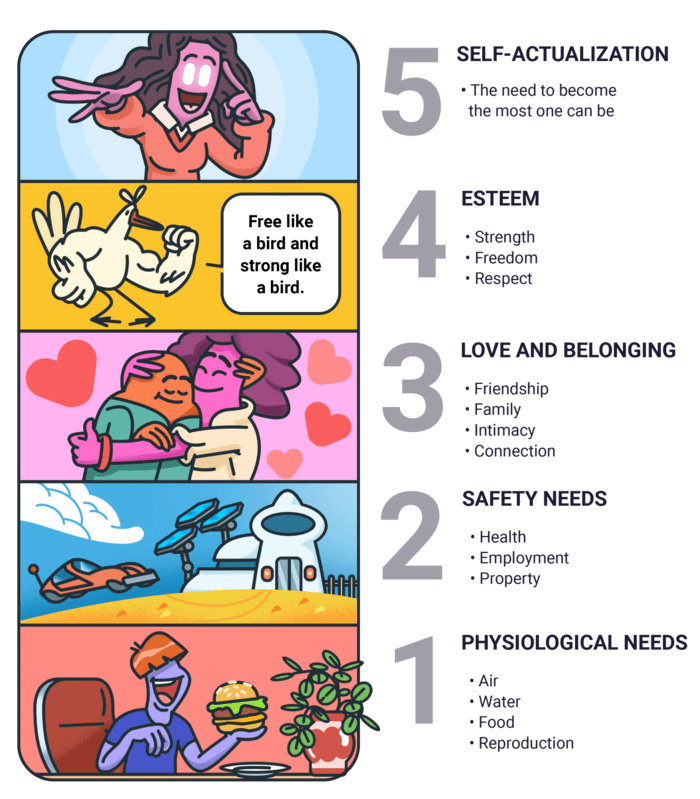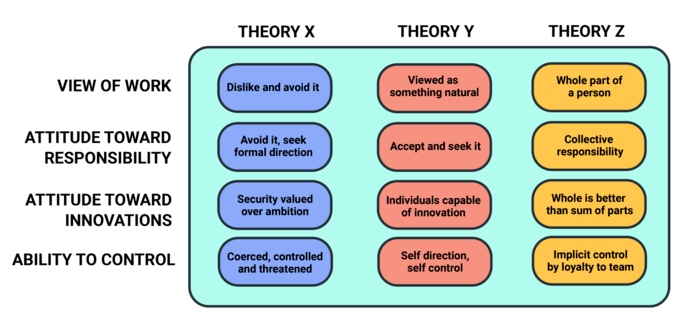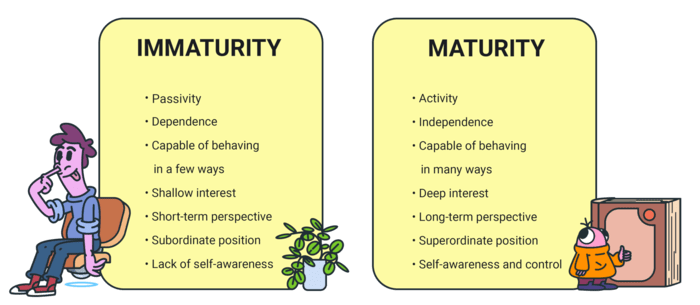Motivation guide: How to get and stay motivated
Last updated on: October 22, 2021
Ever wondered what it takes to get you motivated to perform various activities in life?
For example:
→ How to develop motivation?
→ What do you do when you have no motivation?
→ How to get motivated to work?
→ How to get motivated to work out?
→ How to get motivated to clean?
→ How to get motivated to study?
And, once you get motivated, what does it really take for you to stay motivated long enough to see said activities through?
These are all vital questions — after all, motivation is what pushes us ahead in life.
It stimulates excitement and persistence to pursue any task — without it, we’d never finish college, never find a job, and never commit to that new exercise routine.
Luckily, all of these questions boil down to one relatively simple answer — our motivation for everything we do in life depends on our wants, needs, and expectations. We just need to figure them out and ask a couple of relevant questions:
Do we need to work out?
Do we want to work out?
And what reward can we expect if we do?
In this article, we’ll shed light on how to get and stay motivated. We’ll show you what researchers have to say on the matter by discovering 7 motivation theories (+ motivation examples). Moreover, this motivation guide will also lead you through 8 great popular tips on how to stay motivated afterward (+ motivational quotes), so stick around until the end.
Table of Contents
How does motivation work?
According to Psychology Today, motivation is “the desire to act in service of a goal.” As such, it plays a vital role in setting and achieving our targets.
But, what do you do when experiencing a lack of motivation? Do you watch some videos or read inspirational quotes to lift your spirits? We tend to believe that doing such activities will help us be motivated. Thus, we expect that inspiration will occur as a natural result of these actions.
However, it’s the other way around. Motivation appears after starting a new action, not before it. Then, once we feel inspired to perform the task, we find it easier to continue with its process. That’s why beginning a new assignment can be so difficult, but completing it is usually painless.
Now, just like your productivity can change throughout the day (thus, you need to follow your circadian rhythms to be more efficient with tasks), motivation levels can also get higher and lower. Therefore, we can distinguish between:
- peak motivation and
- motivation decrease.
Peak motivation
Peak motivation is the highest point of incentive. It’s the moment when you’re performing your tasks the best you can and, thus, you’re happy. When we’re reaching the highest point of inspiration, we’re in a mental state that allows us to aim our attention solely at the task and forget about the rest of the world.
So, how do you ensure you achieve peak motivation? How to become more motivated?
One of the ways to do so is to follow the Goldilocks principle. According to this principle, you should work on tasks that are neither too easy nor too complicated, in order to reach peak motivation. As explained in the paper on occupational health and its relations to the Goldilocks principle, this term is inspired by the famous fairytale the Three Bears. In this story, a little girl named Goldilocks tries several bowls of porridge, only to find out that some of them are too hot, too cold, or “just right” for her needs.
If we apply this rule to the workplace, we’ll see that your assignments can be too difficult, too easy to solve, or “just right” for your level of experience and expertise. Thus, try to work on the assignments that are at the right level of difficulty. That way, you’ll be motivated and also thrilled to carry on working.
Motivation decrease
Your motivation to perform tasks will be your driving force for some time. But, then, you’ll probably experience motivation decrease — the moment when your incentive is fading.
You’re probably wondering how to develop motivation once again in these situations. Or, is this a sign to take a break?
When you’re feeling that you’re not motivated anymore, your mind will sometimes suggest that you’re tired. Thus, an easier path would be to stop working on your tasks. At the same time, your mind can suggest not giving up because if you manage to complete your assignment, you’ll feel good about your accomplishment. In a way, your mind is telling you that you’re capable of finishing your task.
Remember that these are all just suggestions, not rules. Therefore, when your inspiration fades, you don’t have to continue working if you’re exhausted. Choose an option that works best for you at the moment. Sometimes taking a quick break can truly regain your motivation.
Motivation as a habit
We’ve seen how motivation works and that we can experience both its peaks and declines. But, there are also several simple steps you can take to make motivation a habit.
Step 1: Develop a pre-game routine
We already mentioned how we usually find it difficult to start any task. Once we begin, finishing assignments is much easier because we feel more motivated.
That’s why you should establish a pre-game routine that’s incredibly easy to follow. This action will help you begin working on any task even when you’re not motivated. Besides, the pre-game routine is important because it sends signals to the brain that it’s time to begin a new activity or a task.
For example, before I start working in the morning, I like to brew a cup of coffee. That’s a simple thing to do that only takes a few minutes. More importantly, thanks to this routine, my mind gets aware that working hours have started.
Step 2: Be sure that physical movement plays a vital role in motivation
Your incentive, or a lack of it, depends on your physical movement. Here’s why. When you’re unmotivated or feeling down, you are barely moving. Your body is following your mental state.
So, how to become more motivated?
Apart from setting up a pre-game routine, the next step is making sure that you’re physically moving. This way, you’ll feel energized and motivated to deal with your tasks. Of course, this doesn’t mean that you have to exercise or go for a run to become motivated. If your daily goal is to write 1,000 words by the end of the day, then a simple act of typing counts as physical movement.
Aside from enhancing your motivation, exercising your body and mind can also help you improve your productivity.
Step 3: Try to follow the same order every day
The final step is ensuring you follow the same order of actions daily. That means pursuing the first and the second step we explained, to make motivation your habit.
You need the pre-game routine because it triggers your habit. Then, when your brain gets the message, you will be mentally prepared to perform any activity.
Next, try to move your body and start working on a task. At this point, your mental and physical state will be aligned. Thus, incentive will follow.
As you can see, following this easy pattern will help you build motivation as a habit, which will allow you to carry out your activities and assignments with ease.
How to get motivated?
You might be wondering: What methods and routines can get me motivated? We already explained that you can try to make motivation your habit.
In addition, there are other ideas on how to develop motivation. In this section, we’ll cover 7 main theories of motivation that can help you.
1. Get motivated with Maslow’s Hierarchy of Needs
If you’re struggling to figure out how to be motivated, you may find Maslow’s theory of human motivation practical.
According to this theory, once you satisfy your needs, you no longer feel motivated to pursue them.
So, our motivation stems from our needs.
However, there are several types of needs you need to satisfy — only when you satisfy the higher-need levels will you become motivated to pursue the lower-need levels. Here’s how these needs stack up:

- Physiological needs — the basic needs, such as the need for water, food, shelter, etc. These needs always need to be satisfied first.
- Safety needs — the need for being protected from physical danger, and enjoying economic security, etc.
- Social needs — the need to partake in social interactions and belong to a group.
- Esteem needs — the need to grow and maintain your sense of self-esteem and self-respect, as well as your competence and independence.
- Self-actualization needs — the need to turn your potential into reality. You’ll feel motivated to pursue these needs last — once you satisfy the first 4 types of needs.
ℹ️ HOW MASLOW’S HIERARCHY OF NEEDS HELPS GET YOU MOTIVATED?
When trying to motivate yourself for high-end needs, always make sure you satisfy the lower-end needs first — otherwise, you won’t be able to get motivated.
For example, let’s say you’re looking to land your dream job — apart from making sure you don’t go to the interview hungry, you’ll also need to expand your social circle and work on your self-esteem first.
Take seminars, reach out to experts in your industry on Linkedin, and join a class in something you know you’ll be good at — success in any of these actions will increase your self-confidence and bring you closer to reaching the highest levels of self-motivation needed for your end goal.
2. Get motivated with the Theory of Four Motivations
The Theory of Four Motivations is based on the concept of external and internal motivators.
It pursues the idea that we need a reward in order to get motivated for a task.
Based on the type of reward we’re aiming at, we distinguish between action-based and non-action based motivators and rewards:

Action-based motivators
These motivators imply that an action has occurred — you felt motivated to perform an action, and you performed it, out of a drive to seek an internal or external reward.
- Extrinsic motivation — you feel motivated to perform an action solely to get a reward or avoid a punishment.
Type of reward you’re looking for: External reward
MOTIVATION EXAMPLE: You feel motivated to train football only because you may someday win trophies or because your parents want you to.
- Intrinsic motivation — you feel motivated to perform an action because you enjoy doing it.
Type of reward you’re looking for: Internal reward
MOTIVATION EXAMPLE: You feel motivated to train football only because you enjoy it.
Non-action-based motivation
These motivators imply that an action has NOT occurred — you felt motivated to perform an action, but you haven’t performed it, despite the drive to seek internal or external rewards.
- Introjected motivation — you want or need to perform an action, but if you don’t live up to expectations, you feel tension and guilt.
Type of reward you’re looking for: Internal reward
MOTIVATION EXAMPLE: You want to get good grades at school in order to keep up with your friends — anything less than an A or B on your tests makes you feel bad.
- Identified motivation — you know something needs to be done, but you have yet to start working on achieving your goals.
Type of reward you’re looking for: External reward
MOTIVATION EXAMPLE: You know your college application depends on your SAT scores, but you procrastinate instead of studying.
ℹ️ HOW THE THEORY OF FOUR MOTIVATIONS HELPS GET YOU MOTIVATED?
Ask yourself: Do you value other people’s opinions more than your own?
This may be a crude example, but the answer will determine whether you’re more likely to be satisfied with an internal or external reward.
Bear in mind that seeking only external rewards doesn’t have to be a bad thing — but, it may influence your level of happiness in the long run.
For example, trying to get good grades just for the sake of it may be a destructive motivator you’ll regret later in life — but, there’s no denying that good grades will increase your chances of getting into your dream college.
So, instead of doing something to please others or conform to a norm, find your own motivation for your goal, one that will bring you an internal reward — in the form of the sense of enjoyment you’ll feel when your hard work pays off for you.
3. Get motivated with the Herzberg Two-Factor theory
Another concept we included in this motivation guide is Herzberg’s theory. According to this theory, there are two separate sets of factors in the workplace:
- The motivators — the set of factors that cause job satisfaction.
They include factors such as:
- recognition
- achievement
- advancement.
MOTIVATION EXAMPLE: When you have a high chance of advancing in your company, you feel more satisfied with your job.
- The hygiene factors (or demotivators) — the set of factors that cause job dissatisfaction.
They include factors such as:
- the level of supervision
- company policies
- working conditions
- salary
- chances of securing the job for a longer period.
MOTIVATION EXAMPLE: When you have high levels of supervision in your company, you feel less satisfied with your job.
Bear in mind that the absence of one set of factors doesn’t guarantee the onset of the other set of factors — the absence of the factors that lead to job dissatisfaction won’t necessarily lead to job satisfaction, and vice versa.
ℹ️ HOW HERZBERG’S TWO-FACTOR THEORY HELPS GET YOU MOTIVATED?
The factors that determine whether you’re happy and motivated at work depend on the individual — so, it’s up to you to decide what your motivators and demotivators are:
→ For example, just because your job has no advancement options it doesn’t mean you’ll be dissatisfied with your job — not if you really enjoy what you do.
→ On the other hand, just because your salary is high it doesn’t mean you’ll be happy with your job — if you’re not getting along with your colleagues.
So, when looking for a job, think about what you know will motivate you about it: a high salary (despite unreliable colleagues), or a job you enjoy (despite no advancement options).
When making your decision, make sure the motivators trump the demotivators.
4. Get motivated with McClelland’s Human Motivation Theory
Another idea on how to become more motivated is to try McClelland’s theory, which is closely related to learning theory. McClelland believed that all the needs we have are learned and acquired by:
- the people we live with
- the environment and culture we live in
- the experiences we gain in life.
According to McClelland, people have 3 types of driving motivators, i.e. needs:
- THE NEED FOR ACHIEVEMENT — this is the need to achieve excellence in something you do, by also being better than the competition:
- you want to achieve better results (much more than other people)
- you have no problem with taking responsibility
- you need constant performance feedback to help you keep going.
- THE NEED FOR AFFILIATION — this is the need to create and maintain friendly relations with the people in your environment:
- you want approval and acceptance
- you tend to conform to the wishes of others
- you value other peoples’ feelings.
- THE NEED FOR POWER — this is the need to make a lasting impact and difference in life overall:
- you need to emphasize a leader-follower relationship with others (with you being the leader)
- you want to control your environment
- you want to make an impact on people.
ℹ️ HOW MCCLELLAND’S HUMAN MOTIVATION THEORY HELPS GET YOU MOTIVATED?
Although the need for achievement and need for power often go hand in hand, they may be in opposition with the need for affiliation — so, you’ll need to identify the type of needs that drive you:
→ Maybe you’re the most motivated when you’re advancing at work?
→ Maybe you’re the most motivated when you’re getting along well with your colleagues?
→ Maybe you’re the most motivated when you feel in control?
Once you decipher what drives you, it’ll be much easier to work on creating workplace conditions (or finding a job) that will make sure you get motivated.
5. Get motivated with The Participation Theories
Douglas McGregor distinguished between two views of people, in terms of their participation at work — he labeled these views as two different theories:
- Theory X — a mostly negative view, according to which people are:
- passive
- naive
- self-centered
- lacking in ambition
- unconcerned for the needs and goals of their companies.
- Theory Y — a mostly positive view, according to which people are:
- assertive
- concerned about company goals and needs
- willing to take on the responsibility
- willing to strive for achievements.
In the end, McGregor drew out the 2 theories to serve as the extremes in which working people behave.
No one really falls exclusively in either of the 2 groups — instead people swing from one group to another. These changes are related to how their priorities, motivations, and environment change.
This is where William Ouchi’s Theory Z comes into play — according to it, people need to be generalists instead of specialists at their workplace. So, they need to undergo constant training and expand their knowledge.

According to Theory Z, people are more likely to swing towards the positively classified people from Theory Y — but only if they are provided with the right knowledge:
- People who know what their roles are and why they are significant to the company as individuals are more likely to be motivated.
What people need to know:
- the company goals
- the amount of contribution they can bring to reaching said goals.
People who know that the company’s success will bring certain rewards to them are more likely to be motivated.
What people need to know:
- how reaching the company goals will satisfy their own needs and wants.
ℹ️ HOW THE PARTICIPATION THEORIES HELP GET YOU MOTIVATED?
Knowledge may be power — but knowledge also brings motivation.
For example, employees who work in flexible, transparent companies where they feel like their contribution and opinions matter, are more likely to feel motivated.
The following elements are also likely to lead to high motivation — so make sure you inquire about them when looking for a job, or when establishing a management system:
→ strong company culture
→ long-term employment
→ constant development
→ having a part in decision making
→ individual responsibility
→ the concern for the happiness of employees.
6. Get motivated with the Argyris Immaturity-Maturity Theory
According to Argyris’ theory, the management practices in your company influence the behavior and personal growth of people — as well as their motivation and drive.
There are two extreme types of management systems Argyris emphasizes — one triggers immaturity in employees and the other triggers maturity.

Let’s call these two systems Management System A and Management System B:
- Management system A — a rigid management setting that triggers immaturity, by encouraging:
- high task specialization
- a rigid chain of command.
It makes the employees:
- passive
- dependant
- disinterested in really contributing to the company.
- Management System B — more flexible management that triggers maturity, by encouraging:
- high employee participation in the company
- independence in making decisions.
It makes the employees:
- independent
- interested in their work on a deeper level
- more actively engaged in the workplace.
ℹ️ HOW ARGYRIS’ IMMATURITY–MATURITY THEORY HELPS GET YOU MOTIVATED?
This theory is geared especially at improving motivation in companies — as you probably guessed, a company that harbors the Management System B is more likely to have motivated employees.
So, if you’re looking for a company where you’ll feel motivated to work, or if you’re a manager looking to implement a new management system, make sure you know what you’re looking for — flexibility, and plenty of opportunities for active participation and engagement.
7. Get motivated with the Expectancy Theory + Expectancy Model
Victor Vroom was the one who first noticed the relationship between expectancy and motivation — and defined The Expectancy Theory based on his findings.
This theory proposes that motivation is directly caused by the relationship among:
the effort you put into your work ⇄ the performance you achieve ⇄ the reward you get for your efforts.
So, in order to feel motivated, you’ll need to:
- value the idea of awards
- expect a reward for your efforts
- invest effort into reaching the said reward.
In the end, rewards bring satisfaction — the promise of such satisfaction leads to better performance and higher self-motivation.
This is where The Expectancy Model kicks in…
It was proposed by Porter and Lawler who took some inspiration from Vroom’s Expectancy Theory and then improved it:
According to the Expectancy Model, motivation DOES NOT equal satisfaction and performance directly.
Instead, motivation is a complex system where a number of elements lead an individual to pursue satisfaction and good performance:

- The effort you put in a task depends on:
- the reward
- how you value the reward
- whether you believe that reaching said reward is possible.
- The element of satisfaction is vital, but cannot be triggered by just any award — Porter and Lawler also distinguish between intrinsic and extrinsic awards:
- Intrinsic rewards are tied to self-actualization and the feeling of accomplishment.
- Extrinsic rewards are tied to your working conditions and status in the company.
In any case, if the intrinsic and/or extrinsic reward meets your expectations, you’ll feel motivated.
- Sometimes a large effort will lead to high performance, sometimes it won’t — if the employee’s abilities are low and his judgments poor, a great performance might be out of reach no matter the size of the effort.
ℹ️ HOW THE EXPECTANCY THEORY + THE EXPECTANCY MODEL HELP GET YOU MOTIVATED?
What we expect to get from our efforts is vital for our motivation — but it takes adequate abilities and decisions to get us through the finish line in the end.
So, pick a goal for which you’ll feel satisfied when you reach it — but also one that’s manageable enough for your abilities and aspirations, so that you know your efforts won’t be in vain.
How to stay motivated?
To nicely complement the scientific theories about getting motivated, this motivation guide will cover some additional tips and strategies on how to get and stay motivated — with a string of motivational quotes to help you stay inspired to pursue your goals:
🔹 Choose one goal

Working towards several goals makes you unfocused and your end results sloppy — so choose one important goal you know:
- you’re capable of achieving
- you need to achieve
- you want to achieve
- you’ll get a reward if you achieve it.
This way, you’ll know what you need to focus on, why you need to focus on it, and what you’ll get if you do — so it will be easier for you to stick to this goal.
🔹 Get excited about that goal

Getting excited about a goal is vital for sustaining motivation — and working on something you love is the best motivator of all.
So, find a job you enjoy doing, pick a subject major at college you love, and try to find something you like in any task you’re assigned to do — these simple things will make sure you stay motivated in the long run.
🔹 Find inspiration

When feeling uninspired, you’re probably beating yourself up with questions such as “where to find motivation”. But, here’s the thing, whatever the reason to why you have no motivation may be, remember that somewhere, someone had the same problems as you.
So, finding inspiration in people who’ve achieved what you’re looking to achieve is an excellent motivator.
If you ever get into a slump with your work and errands, think about how famous people overcome their problems and procrastination, and what words of wisdom they had to offer.
🔹 Start small

It’s always best if you think big, but start small — even if your instincts are telling you otherwise.
For example, researching, writing, and editing a 10,000-word project proposal is basically just a disaster waiting to happen — you’ll likely fail and feel bad about it afterward, while your motivation to take on similar tasks in the future will plummet.
But, that’s just because such a task is basically impossible — you’ll fare much better if you start smaller.
Divide your 10,000-word proposal into several days — for example, write and edit 1,000 words each day. Set a time frame during which you’ll work on the said task (for example, 4 hours each day), and track the time you spend on the task each day, to make sure you progress as planned.
🔹 Don’t give up

There will be problems along the way — but, you’ll need to remember that problems on the road to your goals are natural.
Moreover, they are usually temporary — so, if you’re ever feeling in a slump, remember that you’ll likely feel and fare better tomorrow.
Use that thought as motivation to push forward.
🔹 Be happy about every success

As we’ve already established with great certainty, rewards are crucial to motivation — and establishing continual rewards for milestones on tasks will always make sure you keep pushing forward.
For example, when working on a 10,000 project proposal in 1,000-word stages, make sure you set a reward for the completion of each stage, in order to celebrate your hard work.
You can do this by going on a coffee break with friends or watching one episode of your favorite TV show after each stage. In the end, it’s all about being happy for any success you make along the road.
🔹 Ask others for support

When you’re struggling and feel like you have no motivation, let others provide it for you.
Call your friends and family to ask for advice.
Or, join an online community to talk to people who have or had the same problems as you.
Remember, when all else fails in keeping you motivated, help and support from others who’ll be understanding of your plights will go a long way.
🔹 Accept you’ll have ups and downs

In the end, it’s important to stress that you won’t always succeed — sometimes you’ll fail despite your best efforts, but that’s no reason to lose motivation to tackle a similar task sometime in the future, or to try again.
Simply, analyze your weak areas and think about what and how you can perform the same or similar tasks better another time — knowing how you failed the first time will give you the motivation necessary to make sure you don’t repeat the same mistakes in the future.
Wrapping up…
How to get and stay motivated? Well, this is often a tricky process — one depends on our understanding of our motivation and the other depends on our choices and outlook on life.
In this motivation guide, we covered 7 theories that serve as a great scientific foundation that helps you get motivated — and the overall gist is simple:
- define the needs you know you have the motivation to pursue
- think about whether your abilities are enough for you to perform well on your goal
- think about the rewards you’ll expect after reaching said goal
On the other hand, staying motivated often seems more like a process — to make sure you maintain your motivation, you’ll need to:
- choose one relevant goal you can reach
- find anything about your current task you enjoy doing
- look for constant inspiration in the successful people around you
- work in smaller stages in order not to exert and demotivate yourself right from the start
- not give up when you hit bumps on the road
- be happy about every success you achieve
- ask others for support when times get tough
- accept you’ll have ups and downs.
In the end, by doing all that, you’ll grasp what you want, what you need, what you expect, and how you can play up and maintain the right kind of motivation to make your goals possible.
✉️ Do you find it difficult to become motivated? When you get inspired, do you manage to stay motivated long enough to finish your tasks? Write to us at blogfeedback@clockify.me for a chance to be featured in this or future articles.


